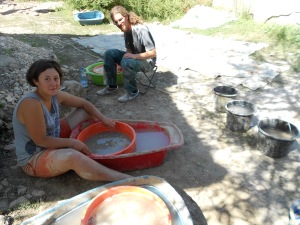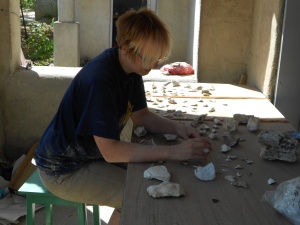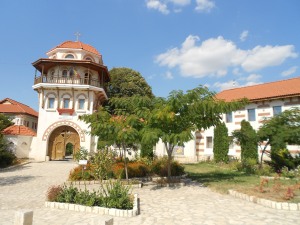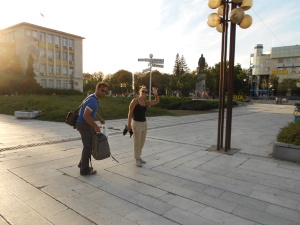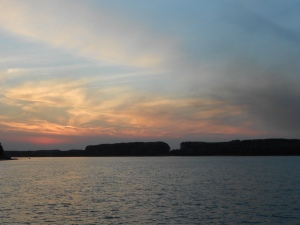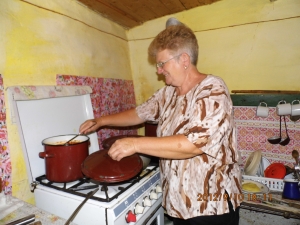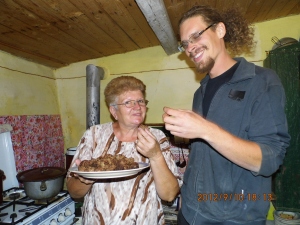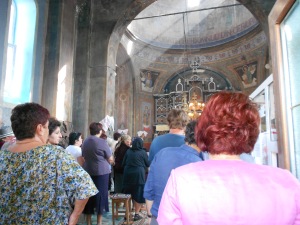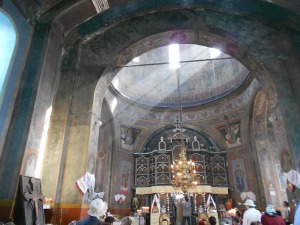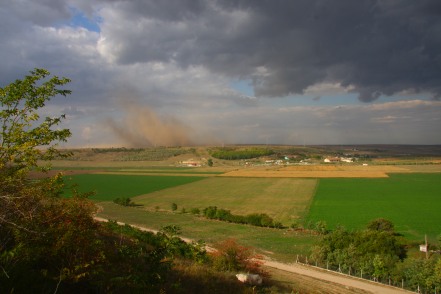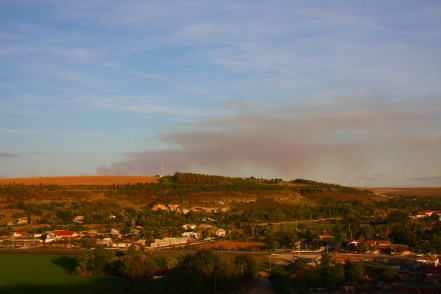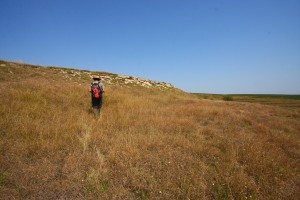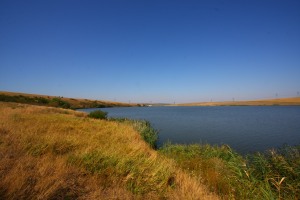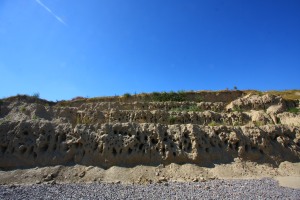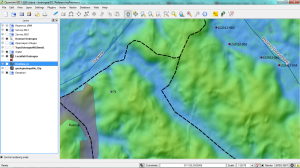The latest paper from the project, “Loess accumulation during the last glacial maximum: Evidence from Urluia, southeastern Romania”, is now in press in Quaternary International, and can be found here: http://dx.doi.org/10.1016/j.quaint.2013.08.005. The paper shows that between 6-8 m (!!) of loess were deposited during the LGM in the Lower Danube steppe.
25 September, 2013
New paper on loess accumulation at LGM by K. Fitzsimmons and U. Hambach out in Quatern. Int.!
Posted by iovita under UncategorizedLeave a Comment
19 June, 2013
New paper about the Campanian Ignimbrite out in PLoS One!
Posted by iovita under UncategorizedLeave a Comment
Our latest paper, published recently in PLoS One, shows new ash data from Romania, which suggest that the CI-eruption and its possible effect on human populations 40 kyrs ago in the region might have been grossly underestimated: http://www.plosone.org/article/info%3Adoi%2F10.1371%2Fjournal.pone.0065839.
5 June, 2013
New paper on the survey project 2010-2012 out: Iovita, R., A. Dobos, K. E. Fitzsimmons, M. Probst, U. Hambach, M. Robu, M. Vlaicu, and A. Petculescu, (2013) “Geoarchaeological prospection in the loess steppe: preliminary results from the Lower Danube Survey for Paleolithic Sites (LoDanS)”. Quaternary International doi:10.1016/j.quaint.2013.05.018. Link
28 November, 2012
Our first paper on the late Middle Pleistocene site of Dealul Guran was published today in Antiquity. Link: http://antiquity.ac.uk/ant/086/ant0860973.htm
18 September, 2012
The field work is done, the excavation trench filled up and the cars clean again. But this does not mean that nothing more has to be done. Besides the excavation and the survey operations, the lab had to be run as well.
In the previous five weeks we sieved, washed and sorted over 450 buckets of sediments. All the artefacts had to be cleaned, labelled and sorted. We worked on refittings and plotted the progress of the excavation.
Even now with most of the team already gone there is still a lot of work left and our analysis and documentation continues on.
17 September, 2012
On Thursday it was time for us to pack up our tents, equipment, finds and samples. The field season 2012 is over and we said our goodbyes to everyone.
Thank you Peştera for making us feel welcome over those last five weeks!
Part of our group left by train to various next locations, while some took the cars with all our gear back to Bucharest.
On the way back we made some little stops though. The abbot of the Dervent Monastery had offered us a tour of the Monastery and we gladly took him up on it. He even gave each of us a bottle we could fill up with healing water from the holy spring.
Next we drove to the Bulgarian border, parked our cars, took a nice walk across and had a drink in a Bulgarian café as well as a look at the city centre and of course the archaeological attractions of Silistra.
After we walked back into Romania we took a ferry across the Danube and drove straight back to Bucharest,were everything we brought with us had to be unloaded (Adrians office looks quite packed right now.)
We all had a great time during the last couple of weeks, we met new people and gathered new experiences. Though, by now, most are already back home or on their way there will be one more post to come, so stay tuned 😉
15 September, 2012
Salată de vinete, Chiftele and Ghiveci – Thank you Tanti Geta!
Posted by Kristin, Mathias & Nina under 2012 Season Blog1 Comment
One of the main issues for archaeologists, especially for students, to discuss when returned from a field campaign is the food. In many instances – from France to the Crimea and probably even far beyond – the meals served are barely more than a source for carbohydrates, fats, protein. During the last weeks Tanti Geta was cooking for us and we all agree that there is nothing to complain about her undisputed skills in the kitchen – quite the contrary. Asked for our favorite dish we had to discuss at length which of her dishes we like the most – Salată de vinete or Chiftele, Ghiveci or Musaca, Pilaf or Borș de sfeclă roşie? In fact, they all taste really great and some already asked for Tanti Geta’s recipes.
However, we want to thank our cook not only for preparing a delcious dinner every day, but also for washing the dishes, providing us with home made Pálinka and important information about life and people in Peştera: Thank you Tanti Geta! Sărut mâna pentru masă! Mulțumim pentru tot!
P.S. Tanti is a common Romanian affectionate name used by children for adult women.
12 September, 2012
When we were invited to dinner by the mayor a few days ago he asked us to also take part in the most important festivity of the town, the Birth of Mary. Of course we gathered with many other villagers in the church to celebrate this Christian event which marks the beginning of the orthodox ecclesiastical year. Service was then followed by a public meal with more than 150 attendees in the presence of the priests who conducted the ceremony and came to Peştera from as far as Constanța. To most of us who are unfamiliar with orthodox rites and Romanian traditions this day provided a memorable experience of religious and communal life.
The local press covered the event. Find the article here and feel free to look for familiar faces of LoDanS participants in the pictures.
9 September, 2012
A lot has been written about how loess is deposited (for a paper by members of our team on loess and environmental dynamics in Southeastern Europe see this paper). That is why we’d like to refrain from doing so and instead only post a picture taken while excavating today.
Update:
9 September, 2012
Of course not only the excavation at Dealul Guran made progress so far. Our survey efforts to find new sites also resulted in much new information. We have been out in the field to visit loess outcrops of different kinds in order to detect remains of Paleolithic human occupation, i.e. lithic artifacts. More than 70 of those locations have been prospected, ranging from only small outcrops on recently constructed terraces to enormous quarries. In cases in which lithics have been found we prepared profiles and sondage pits to track the archaeological horizon from which they erode.
However, in some instances this approach only raised more questions. At two locations single lithic artifacts have neither been found on the ground below the loess outcrop nor embedded in the sediment itself, but “on” the profile. No further artifacts were observed on the surface, but sondages also did not reveal an in situ archaeological horizon. We suspect the already mentioned ground squirrels – popândău – to be responsible for this situation by carrying single lithics along the long tunnels they use to dig, meaning that the site we are looking for is much further away from the profile where we found the artifact.
Right now we are exploring a location in the vicinity of Peștera which is rich in surface finds. In this case the geological setting of the site and the processes by which the sediment has formed are of particular interest. Since our team so far only consisted of archaeologist we are glad to have a geologist from Germany with us who arrived yesterday to support our work.
